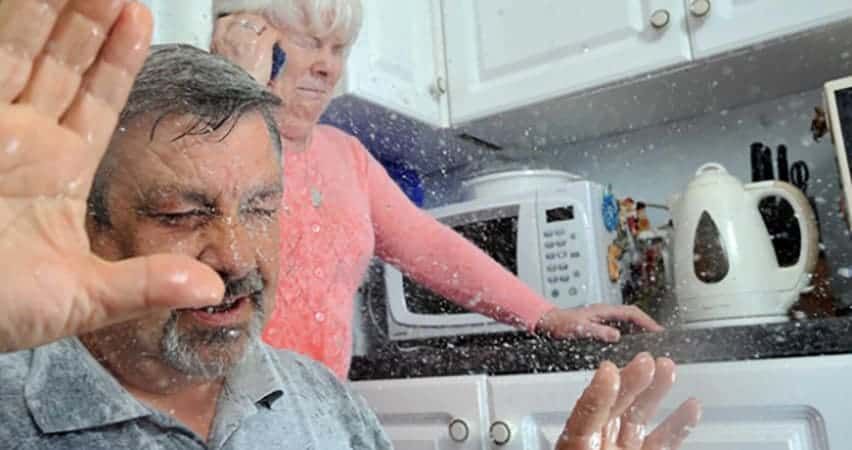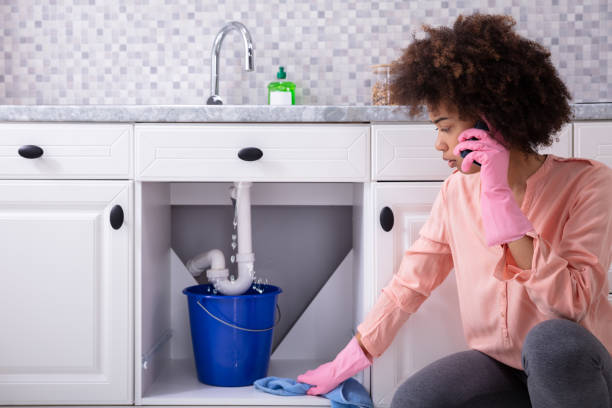Ways to Efficiently Manage Plumbing Issues in Older Homes
Ways to Efficiently Manage Plumbing Issues in Older Homes
Blog Article
The content below relating to Main Plumbing Issues Found in Old Houses is unquestionably enlightening. Read it for your own benefit and decide what you think about it.

Older homes frequently feature appeal, character, and background, but they can additionally bring a host of plumbing problems. Whether you're taking care of maturing pipes, low water pressure, or leaks, recognizing just how to deal with these usual issues is important to maintaining a safe and useful home. In this guide, we'll discover the common pipes challenges encountered by older homes and supply practical options to keep your plumbing in leading shape.
Comprehending Typical Pipes Issues
Aging Pipelines
Among the most typical concerns in older homes is maturing pipelines. Depending on the age in which your home was constructed, the pipes may be made from products that have worn away in time, such as galvanized steel, cast iron, and even lead. These products can corrode, end up being weak, or establish leakages, bring about water damage and prospective carcinogen.
Low Tide Pressure
If you're experiencing low tide pressure, it could be because of natural resources, corrosion inside the pipes, or old components that are no longer working effectively. This can be a significant inconvenience, particularly in areas like showers and sinks.
Dripping Pipes
Leaks are another regular problem in older homes, usually caused by corroded or damaged pipelines. Also tiny leakages can lead to significant water damage, mold and mildew development, and raised water bills if not addressed quickly.
Out-of-date Components
Obsolete pipes components such as taps, commodes, and showerheads not just look old yet may also be less effective, susceptible to leaks, or incompatible with modern pipes standards.
Pipe Corrosion
Corrosion is a common issue in older pipelines, especially those made from galvanized steel or actors iron. Corroded pipelines can limit water circulation, trigger discoloration, and eventually lead to leakages or pipeline ruptureds.
Examining the Condition of Your Pipes
Checking Visible Pipes
Start by inspecting any kind of noticeable pipelines in your house, such as those in cellars, crawl spaces, or under sinks. Search for signs of corrosion, leakages, or corrosion, which can show underlying problems.
Checking for Leaks
Look for leaks by examining areas around faucets, commodes, and under sinks. You can additionally monitor your water meter before and after a duration of no water utilize to discover surprise leakages.
Water Quality Screening
Older pipelines can affect the quality of your water. Conduct a water top quality examination to check for contaminants such as lead, corrosion, or other impurities that might be introduced by aging pipelines.
Solutions for Typical Plumbing Concerns
Replacing Aging Pipelines
If your home has old, wearing away pipelines, think about changing them with contemporary materials like copper or PEX. This can be a substantial investment, but it will certainly stop future issues and boost the safety and integrity of your plumbing system.
Fixing Low Tide Pressure
To deal with low water stress, begin by cleansing or replacing old components and eliminating mineral buildup in the pipelines. If the problem continues, it may be needed to change areas of corroded pipes.
Fixing and Replacing Dripping Pipes
For little leaks, you can utilize pipeline clamps or epoxy putty as a short-term solution. However, it's ideal to replace dripping pipes totally to avoid more damage.
Updating Components
Updating old components to contemporary, water-efficient models can enhance your home's pipes performance and decrease water consumption. Try to find components with the WaterSense label for the very best performance.
Handling Pipe Corrosion
If your pipes are rusted, changing them with corrosion-resistant materials like copper, PVC, or PEX is the very best option. Normal assessments and water top quality maintenance can assist stop better corrosion.
When to Call an Expert
While some pipes issues can be handled with DIY options, there are times when it's ideal to call in an expert. If you're taking care of major leaks, comprehensive rust, or are not sure concerning the problem of your pipelines, a certified plumbing technician can give expert assessment and repair.
Preventive Maintenance Tips
Regular Assessments
Consistently inspect your pipes system for signs of wear and tear. Catching concerns early can stop expensive repair services down the line.
Water Stress Guideline
Guarantee your water pressure is within the suggested variety to prevent worrying your pipes and fixtures. A plumbing can set up a pressure regulator if needed.
Water Quality Maintenance
Mount water filters or conditioners if your water high quality is poor. This can secure your pipes and fixtures from damage caused by tough water or impurities.
Aggressive Pipe Replacement
If your home has very old pipes, take into consideration aggressive replacement before significant concerns develop. This can conserve you from emergency repairs and water damages.
Final thought
Handling plumbing concerns in older homes calls for a mix of watchfulness, preventive upkeep, and timely upgrades. By understanding the usual difficulties and knowing when to seek professional aid, you can ensure your pipes system continues to be functional and trusted for years to find.
Common Plumbing Issues in Older Homes and How to Fix Them
Owning an older home in Australia comes with its unique charm and a set of challenges, especially when it comes to plumbing. The Sunshine Coast has many older properties that can harbour plumbing problems that aren t just inconvenient but potentially costly. Here s a look at some common plumbing issues in older homes and expert advice on how to handle them.
Outdated Piping Materials
Many older homes were built with galvanised steel, cast iron, or even lead pipes, materials that are far from ideal by today s standards. Galvanised pipes are prone to corrosion and clogging, while lead pipes pose serious health risks.
How to Fix:
Replacing old pipes is a job for a professional. Upgrading to copper or PVC piping not only enhances water quality and flow but also increases the property s safety and value. If you suspect your home has outdated materials, a licensed plumber can conduct a thorough inspection and recommend the best course of action.
Corrosion and Pipe Degradation
Over time, exposure to water and minerals can cause pipes to corrode, leading to leaks, bursts, and water contamination. Corrosion is especially common in homes over 50 years old.
How to Fix:
Regular inspections can catch early signs of corrosion. If corrosion is found, the affected section of piping often needs to be replaced. For homes with extensive corrosion, a complete plumbing overhaul might be necessary. It s crucial to consult with a plumbing expert to understand the extent of the issue.
Tree Root Intrusion
Older neighbourhoods usually have mature trees whose roots can intrude into pipe lines, causing blockages or damage. This is particularly problematic for sewer lines, where roots seek out water sources.
How to Fix:
A plumber can use a specialised camera to inspect sewer lines for root intrusion. If roots are a problem, methods like root cutting or hydro-jetting can clear the obstruction. In severe cases, part of the pipe may need replacing. Consider root barriers around the piping to prevent future issues.
Inadequate Water Pressure
Low water pressure in older homes can be due to various factors, including corroded water lines, sediment build-up in pipes, or outdated fixtures.
How to Fix:
First, check if the low pressure is isolated to one area or throughout the house. Replacing old fixtures can sometimes resolve the issue. However, if the problem is more widespread, it might be due to sediment or corrosion. Flushing the system or replacing the affected pipes usually restores normal pressure. Again, a professional assessment is advisable.
Outdated Fixtures
Older homes often feature fixtures that are not only visually dated but functionally inefficient. This includes everything from toilets and taps to showerheads and washing machine hoses.
How to Fix:
Updating these fixtures can improve both water efficiency and the aesthetic appeal of your home. Modern fixtures are designed to conserve water, which can significantly reduce your water bill and lessen your environmental impact.
Conclusion
Maintaining the plumbing in an older home requires a proactive approach. Regular checks and updates are key to preserving these beautiful properties. If you re facing plumbing issues in your older home, it s best to call on experienced professionals like Green & Gold Plumbing & Gas. With the right expertise, even the most daunting plumbing problems can be resolved, ensuring that your home s character is maintained while its functionality is enhanced.
https://gandgplumbing.com.au/common-plumbing-issues-in-older-homes-and-how-to-fix-them/

As a person who reads on Plumbing Problems In Old Homes, I think sharing that piece of content was really helpful. Do you know another individual who is excited about Common Plumbing Problems in Older Homes? Why not share it. We cherish your readership.
Call Today Report this page